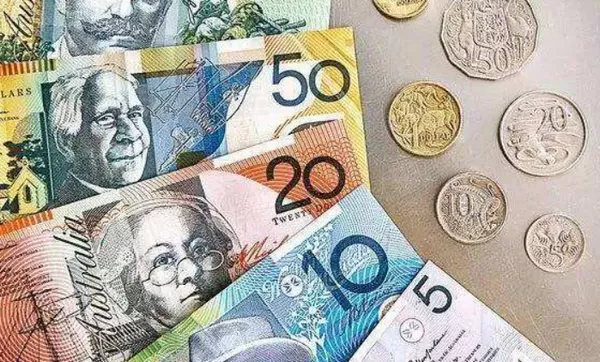In the world of finance and economics, few events are as eagerly anticipated and closely watched as the Reserve Bank of Australia (RBA) meeting. This pivotal gathering of financial minds, held on a regular basis, serves as a beacon guiding the nation’s economic policies. But what precisely happens at these meetings, and, perhaps most crucially, what time does the RBA meet?
A Confluence of Minds
The Reserve Bank of Australia meeting is a confluence of some of the brightest minds in the country, all convened with a singular goal in mind – to deliberate and determine the country’s monetary policy. This esteemed assembly typically takes place on the first Tuesday of each month, from February through to December, and the clock typically starts ticking at 2:30 PM (Sydney time).
Reading the Economic Tea Leaves
These meetings serve as a crystal ball through which financial experts, investors, and the general public glean invaluable insights into Australia’s economic future. It’s during this event that the RBA board examines an array of economic data, international trends, and financial indicators to gauge the nation’s financial health. They analyze everything from inflation rates, employment statistics, exchange rates, and interest rates to assess the state of the economy and to make important decisions about the country’s monetary policy.
In the Heart of Sydney
While the RBA meets throughout the year, its most crucial sessions take place in the heart of Sydney, specifically at the RBA headquarters. This location is symbolic of the bank’s centrality to the nation’s fiscal framework, and it’s here that the board gathers, usually with media representatives present, to discuss the current state of the economy and decide on potential changes to the official cash rate. But what time does the RBA meet? The meeting’s proceedings begin in the afternoon and can continue well into the evening, as the board reviews data, deliberates policy options, and finalizes its decisions.
The Domino Effect: Interest Rates
Perhaps the most closely watched outcome of an RBA meeting is the announcement regarding the official cash rate. This rate acts as a lever that controls the flow of money through the economy, influencing the interest rates offered by commercial banks, which, in turn, affects borrowing and saving behaviors. So, when the RBA announces a change in the official cash rate, it often triggers a cascade of changes in interest rates throughout the financial system. This announcement usually comes a little after 2:30 PM, once the board has made its decision.
Market Reactions and Economic Impacts
With the official cash rate announcement fresh on the table, financial markets and investors eagerly react, affecting currency exchange rates, stock prices, and bond yields. For instance, a rate cut may encourage borrowing and spending, while a rate hike can curb inflation but may also slow down economic growth. Therefore, what time does the RBA meet becomes a critical factor for traders and investors, as they prepare for potential market volatility following the announcement.
Transparency and Accountability
The Reserve Bank of Australia operates under a mandate of transparency and accountability. After the meeting, the RBA publishes a statement that outlines the board’s decision regarding the official cash rate and provides detailed insights into the reasoning behind their choices. This allows economists, financial experts, and the public at large to understand the factors that influenced the bank’s decision-making process.
The Global Lens
It’s important to note that the RBA meeting isn’t just about the Australian economy. In our interconnected world, the decisions made by central banks, like the RBA, have global implications. The global financial community closely watches the RBA’s decisions, as they can impact the exchange rate of the Australian dollar, which, in turn, influences international trade and investment.
The Long-Term View
The RBA’s meetings and decisions aren’t just focused on immediate changes. The bank takes a long-term view of the Australian economy, aiming to foster stable economic growth over time. Thus, decisions made at these meetings can affect the country’s economic trajectory for years to come, making them all the more significant.
The Role of Public Expectations
Public expectations and sentiment also play a vital role in the outcomes of these meetings. The RBA carefully considers how its decisions will be perceived and how they will influence consumer and business confidence. Positive outcomes from the RBA meetings can stimulate spending, investment, and economic growth, while negative results can have the opposite effect.
A Balance of Power
To strike the right balance between stimulating economic growth and controlling inflation, the RBA must make well-informed and timely decisions. They consider a wide array of economic indicators, which is why the question of “what time does the RBA meet” becomes so pivotal. The bank must have the latest data available to make effective decisions that can impact the nation’s financial health.
Beyond Interest Rates
The RBA’s decisions extend beyond interest rates and monetary policy. The bank also plays a crucial role in regulating the financial system, including the supervision of banks and the maintenance of financial stability. Its role goes far beyond setting interest rates; it’s about shaping the entire financial landscape of Australia.
In conclusion, the Reserve Bank of Australia meeting is a cornerstone event in the nation’s financial calendar, eagerly awaited by experts and the public alike. These meetings influence not only the country’s monetary policy but also its economic trajectory for years to come. The RBA’s careful consideration of economic data, public expectations, and global trends shapes the decisions that are announced a little after 2:30 PM on the first Tuesday of each month, from February through to December. So, the next time someone asks, “what time does the RBA meet?” you’ll know that it’s in the afternoon, and it’s a time when the nation’s economic future is being decided.
Related Topics:
Interest Rate Predictions & Forecast Australia
When Does the RBA Next Meet on Interest Rates: A Look at Australia’s Monetary Policy
Things You Need to Know About RBA Decision

























